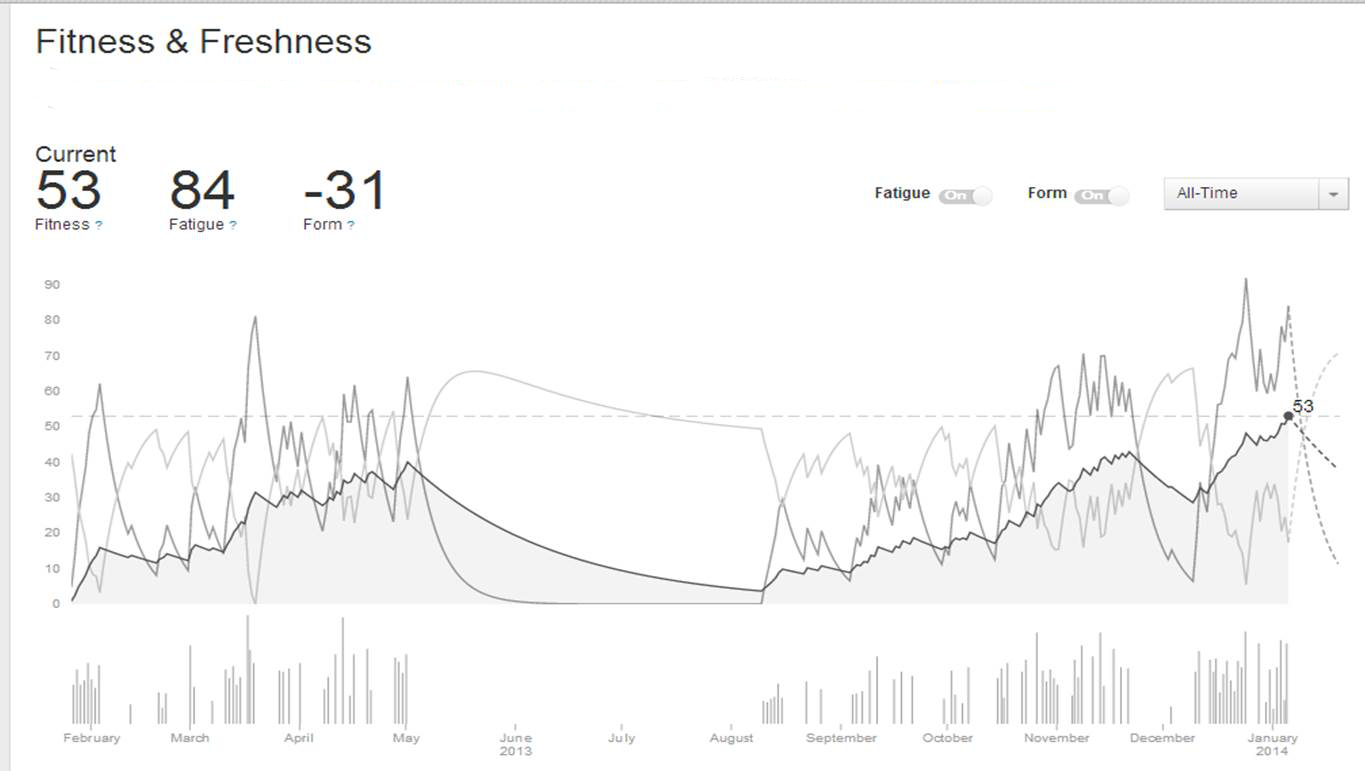
It has become the norm among a large group of cyclists and triathletes to ride with Strava. Whether a means to compete with friends over bragging rights, or to keep a private record of personal goals and achievements, Strava has become part of the cyclist’s toolbox. For some, it is an advance they wouldn’t be without.
We are also seeing more and more people training for competition, and with it, an interest in how cycling technology can contribute to performance. Over the past few years, Strava has worked hard to move from being a record of your ride to a toolbox of analytics and training guides. Perhaps the most useful, pulling data from other apps within the Strava premium area, is the Fitness & Freshness metric.
The Strava Fitness & Freshness metric has been based loosely on the Performance Management Chart developed by Hunter Allen and Andrew Coggan in their book “Training and Racing with a Power Meter”. Allen and Coggan’s technique uses data from your power meter to determined fitness and fatigue, and by comparing these figures your freshness, or how ‘ready’ you are to race.
The idea behind the Strava Freshness & Fitness app is to achieve the same ends, minus the faff. With their ecosystem and your existing ride information, Strava can compile a ‘Fitness/Freshness’ graph simply and automatically, ready for you to dip into as and when you please.
The idea behind Allen and Coggan’s management chart, and Strava’s Freshness & Fitness metric, is a simple one. As we train hard we get fitter, but we also get fatigued. When we have time off we recover, but we also lose fitness. How these balance out is –supposedly- the key to good race day performance, but just as importantly, successful and effective training on and off season.
The Strava app begins by estimating how hard you are working in order to give an indication of how your aerobic fitness is changing over time. Strava collects data from either your heart rate, weighted power average, or both from each ride and compares them to your previous efforts.
Using a weighted average built up over several weeks, the app plots a graph of your apparent fitness and fatigue. Lots of high intensity rides raise your fitness stat in the long term, while reducing your ‘freshness’ in the short term. A simple subtraction of the freshness score from the fitness gives your ‘form’, an indication of how ready you are for competition.

It could be seen as stating the obvious. If you train a lot you get fit but fatigued. If you take time off you recover; but the metric can be more useful than it at first appears.
Having spent time training for an event, particularly rides or runs over longer distances, many newer riders suffer from an anxiety around tapering their training. We all know we need to reduce our training ahead of a long distance event, but by how much and how quickly is not always obvious. The fitness freshness metric can help inform your taper by comparing your power or heart rate from rides over the past month. Small reductions in training loads will be expressed in an increase in your freshness. The shape of the graph can be used to predict how your freshness will rise as you decrease the amount of training you do, bringing you in line for your big event.